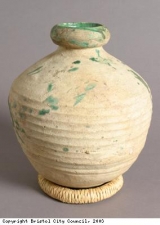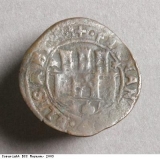Spain
Spain needed labour for its plantations in South America. The Spanish gained land in South America following the voyage of Christopher Columbus in 1492. He was sponsored in his voyage of exploration by King Ferdinand and Queen Isabella. The coin shown here is from their reign. In the early period Spanish merchants took enslaved Africans to the Spanish colonies. But the Spanish government decided to buy slaves through merchants in other countries instead. They contracted out the supply, from 1587. This contract (or asiento) was changed regularly. It went to the Portuguese, Genoese, Dutch, French or British, depending on which country or company offered the best prices. A trading company would offer to pay so much for the contract, and would then hope to recover that money and make a profit on the deal.
In 1676 the contract was awarded to a group of traders from Seville, in Spain. The group (which, unusually, included women investors), were to supply the Spanish plantations with slaves. The group could not deliver the required number of slaves, though, and withdrew early.
The Cadiz Slave Company, from Spain, took over the contract in 1767. They agreed to supply over 8,000 slaves per year to the Spanish plantations. The Company was unsuccessful in doing this however and never made money. But Cadiz merchants continued in the trade for many years. The Spanish city of Barcelona was building slave ships for Cadiz merchants for use in the later 19th century slave trade to the Caribbean island of Cuba.
Spain traded with other many countries as well as with Africa. This included Britain, in fact Bristol merchants were trading with the Spanish from about at least the 13th century. They would have traded wool and animal hides for goods such as olive oil. By the late 15th century, Spain had replaced Portugal as Bristol‘s main trading partner . Wine was the main import, but oil was also important. This Spanish oil jar, found in Bristol, is dated to the 17th or 18th century.




